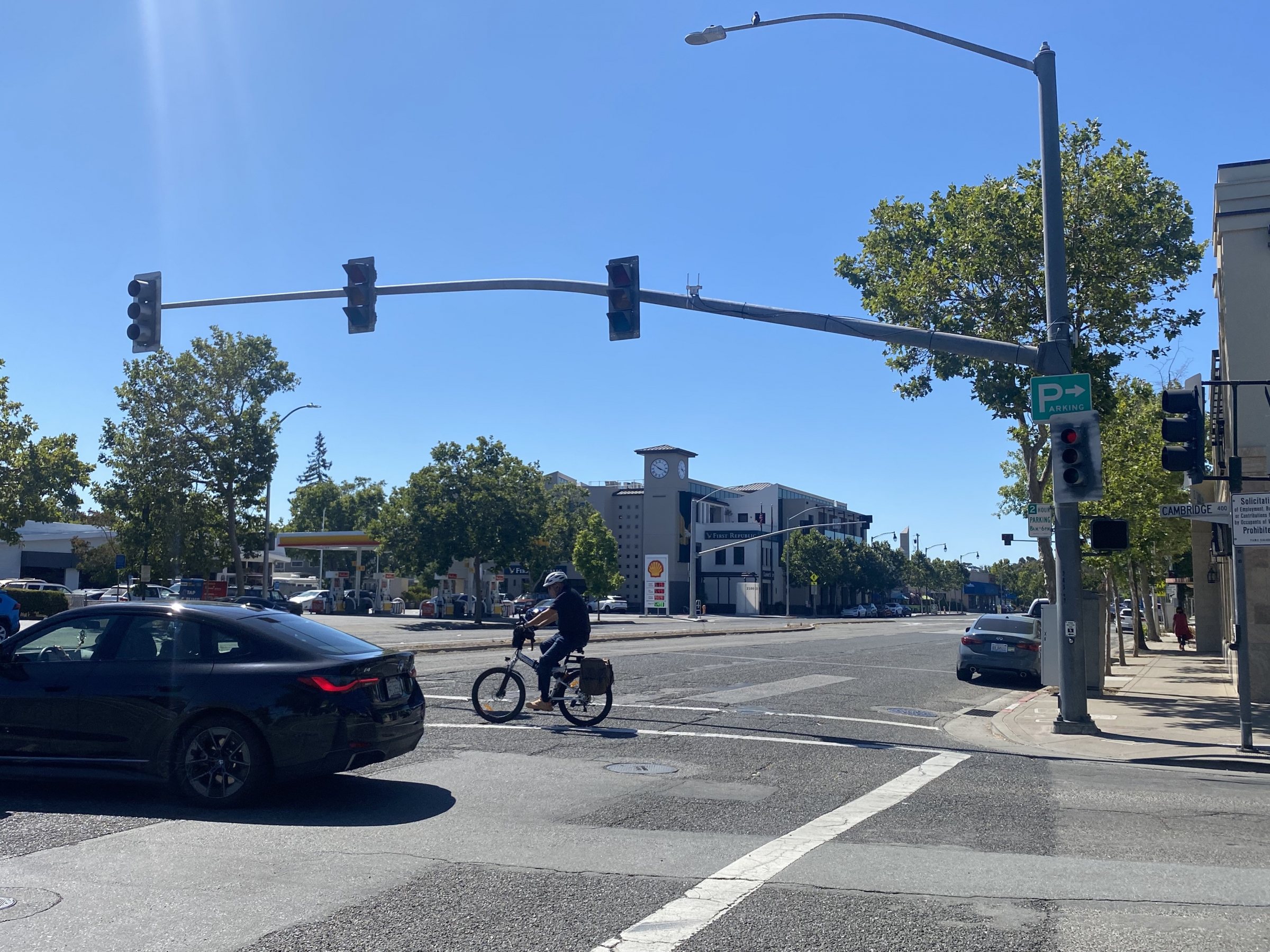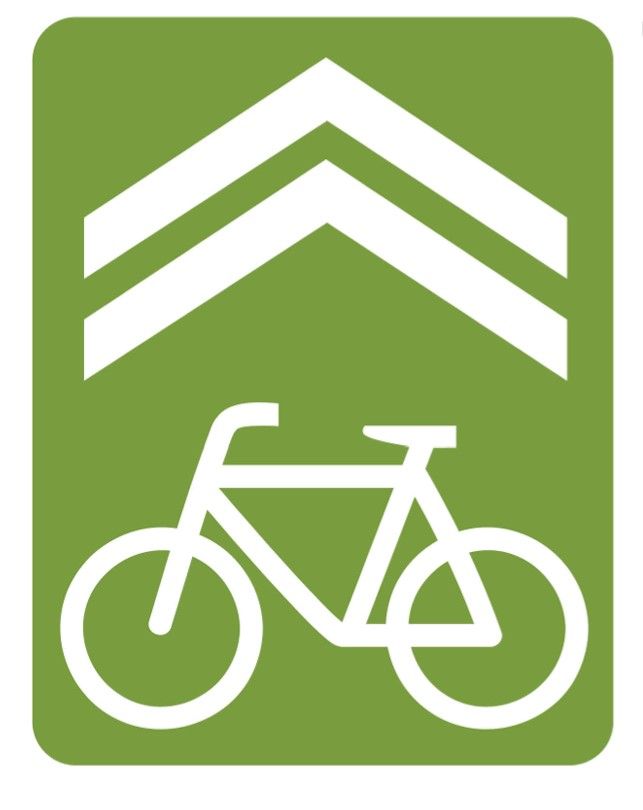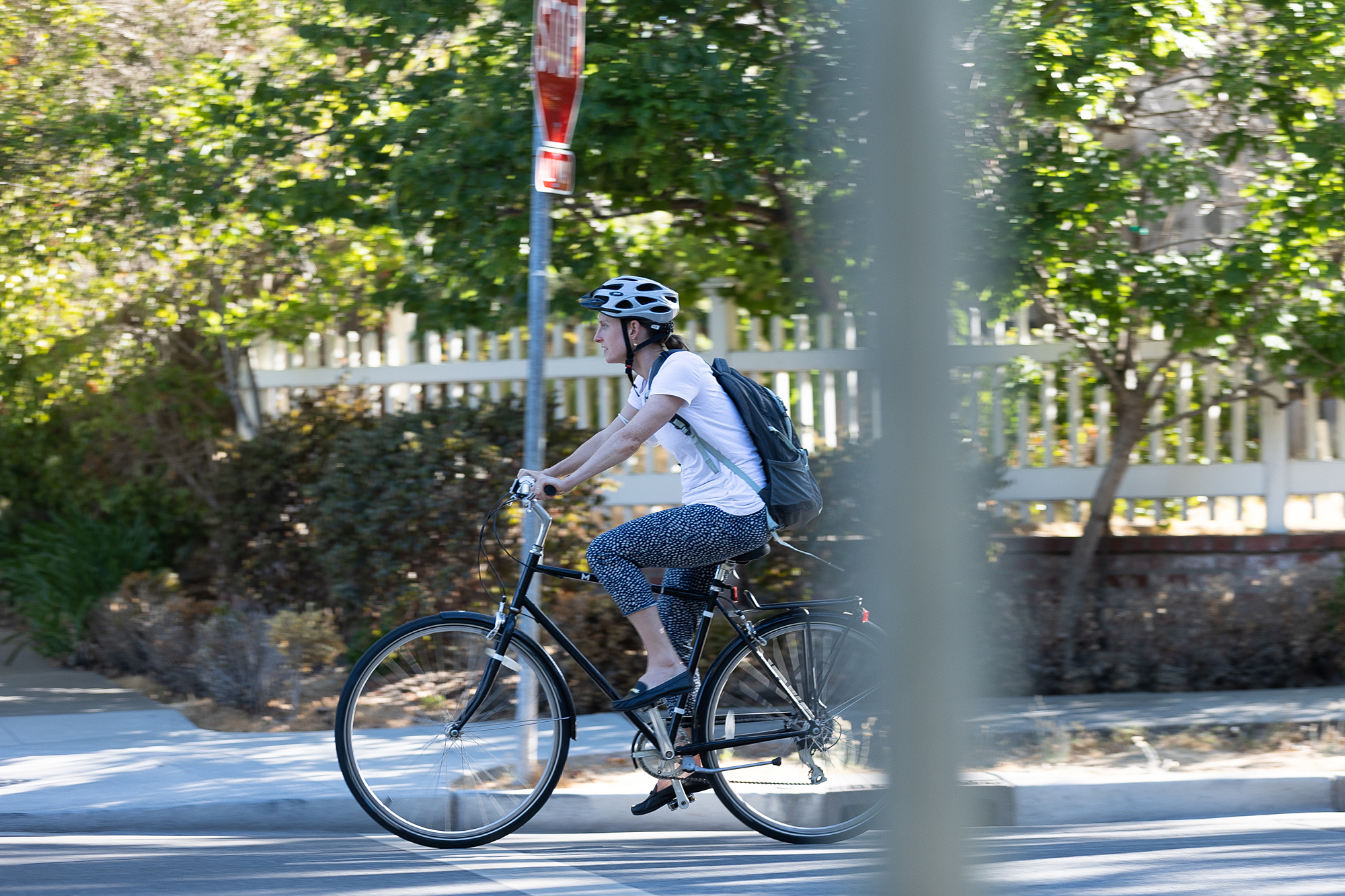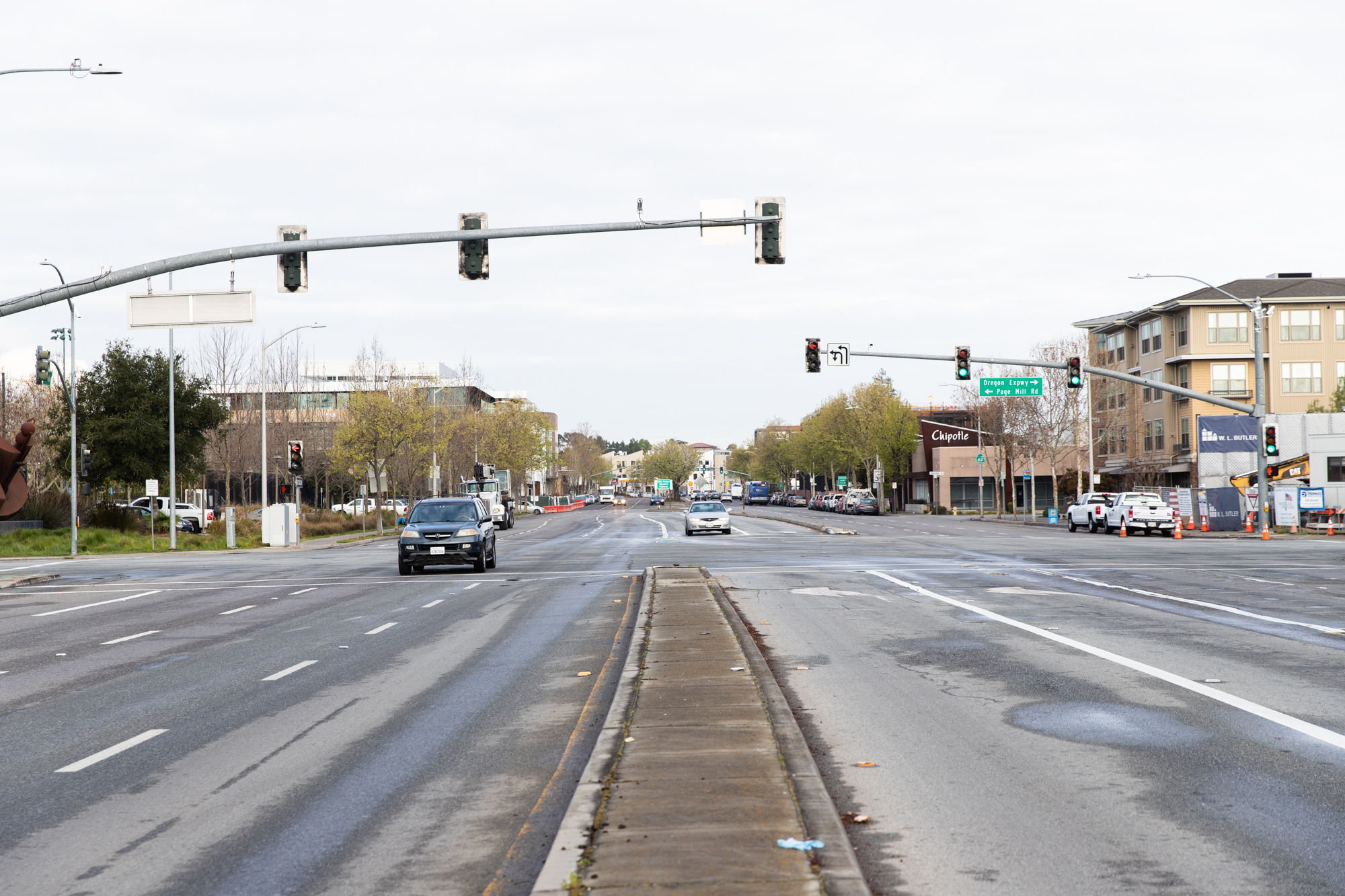Palo Alto famously loves to bike, as its expanding network of bike boulevards, school routes and new projects like the bike bridge over U.S. Highway 101 demonstrate.
Even so, the idea of installing bicycle lanes along El Camino Real has proven to be a hard sell for the local community despite years of analysis and pockets of support from regional planners and transportation officials.
During the pandemic, a joint effort by Palo Alto, Mountain View, Redwood City and Menlo Park released a Peninsula Bikeway study, which explored different options for creating a "bicycle superhighway" that would span the four Peninsula communities.
After considering various route options, including Middlefield Road and Alma Street, the study concluded that El Camino "represents the most viable opportunity to implement such a vision and help improve safety and connectivity for all bicycle users."
The idea continues to enjoy some support in Mountain View and Redwood City, both of which approved streetscape plans that include El Camino bike lanes. In Palo Alto, however, city officials have been lukewarm about steering more bicyclists toward El Camino, choosing to focus their improvements on lower-stress commute corridors like Bryant Street and Park Boulevard.
Some have argued over the years that El Camino, with its eight lanes of traffic, is an inherently dangerous place for bicyclists, even with improvements.
Others have complained about the impact of removing all parking spaces along El Camino to make way for the new bike lanes.
Caltrans plans catch city off balance
The idea is once again gaining momentum. This time, however, it is being spearheaded not by mayors, bike advocates and transportation planners but by the state Department of Transportation (Caltrans), which this fall will begin to repave the local portion of El Camino Real. Along with that project, Caltrans is looking at replacing parking spaces all along the Kings Highway with bike lanes.
And because El Camino is under state's jurisdiction, not any individual city's, local opposition may not be enough to stop the proposal from advancing.
Earlier this year, Caltrans provided to the city of Palo Alto its tentative engineering plans for the new bike lanes, a proposal that appeared to have taken both the city and its bike advocates by surprise.
When the Palo Alto Pedestrian and Bicycle Advisory Committee (PABAC) reviewed the plans at its May meeting, numerous members demanded more context for the decision, according to meeting minutes.
Some questioned the goals of the Caltrans project while others focused on specific details such as the design of "sharrows" (markings that indicate a path is to be shared by cars and bikes) and the impact that the new bike lanes would have on the vehicle dwellers who make El Camino their home.
"What Caltrans did was so surprising that nobody knew quite how to react to it," Robert Neff, a member of the committee, told this publication in an interview.
Neff, who generally supports the idea of El Camino bike lanes, sees the new Caltrans proposal as an extension of the state's "complete street" philosophy, which aims to provide better bike and pedestrian access. While there are specific places where the plan can be further refined, it would significantly benefit Palo Alto's bicyclists, Neff said.
"The main thing is that it means some can safely go a few blocks down El Camino Real from any place to any other place and not think, ‘I better ride on the sidewalk,'" Neff said.
Other committee members have been less enthusiastic about the new proposal and the way it's been unveiled. Alan Wachtel argued that Caltrans should have discussed its plans with the city and with the committee much earlier — before producing the engineering plans, according to a comment sheet that the committee put together.
"For that reason, Caltrans should not form any commitment to these plans, or some variation, simply because they have already been developed," Wachtel wrote.
Committee member Art Liberman suggested bike lanes would only make sense on El Camino if the speed limit is reduced to 30 mph, if the number of traffic lanes is reduced to two in each direction and if all curb cuts are removed. He also argued that bike lanes should all be at least 5 feet wide and be protected with Jersey barriers (concrete or plastic walls) along the length of the corridor, except where there are pedestrian crossings and cross streets.
"Otherwise, I would never bike along ECR as buffered bike lanes would not be safe," Liberman wrote.
How the city's reacted to Caltrans' plan
The Caltrans plan for El Camino bike lanes is rolling out just as Palo Alto is preparing for its own improvements to the local bike network. On June 19, the City Council approved a consulting contract to work on a new bike master plan, which would update the 2012 roadmap that's guided the suite of bike projects the city has completed over the past decade.
Sylvia Star-Lack, the city's transportation planning manager, said in an email to this publication that consideration of bike facilities on El Camino Real was always planned to be included in the plan update.
She noted, however, that it is ultimately Caltrans that has control over what happens on El Camino.
"As El Camino Real is a state highway operated by Caltrans, Caltrans can redesign the roadway to meet the state's safety or other goals," Star-Lack wrote. "The city does not have jurisdiction over the state highway."
Since receiving Caltrans' plans, city officials have repeatedly sought further clarification from the state agency as well as a formal proposal and information about a public process that the agency plans to use to obtain community feedback.
In February, Star-Lack emailed the agency to request the safety study that Caltrans used to justify the bike lanes and wondered what Caltrans would do if the council did not approve an ordinance to remove parking on El Camino.
Chief Transportation Official Philip Kamhi said he has followed up with Caltrans since then but the city has yet to receive that information. He noted that at this point, the bike lane plan is not yet a formal proposal.
"They didn't say, ‘This is what we're doing.' It's more of them saying that it's an idea that they think makes sense based on whatever data that they have," Kamhi said.
He acknowledged that the idea when proposed in the past hasn't gained traction in Palo Alto.
"When we talked about bike lanes on El Camino Real previously, that's been a polarizing topic because we already have an existing network connecting that direction through Palo Alto," Kamhi said. "Some people feel that infrastructure on El Camino Real is not the right answer and some feel it is the right answer, but that's been our plan — to get that through the Bike and Pedestrian Plan and get feedback on that."
Caltrans, for its part, sees El Camino bike lanes as one of its priority projects in the Peninsula. The agency's 2022 planning document for District 4, which includes the Peninsula, cites the prior effort by the four Peninsula cities to identify a long-distance separated bikeway that connects the cities and its conclusion that El Camino would be the preferred corridor.
"El Camino Real represents the most cohesive, connected and appropriate opportunity for implementing this vision," the Caltrans plan states.
The agency did not respond to questions about its outreach strategy and local input on the project.
If the Caltrans plan advances, it would effectively supersede local planning efforts for bike improvements along and around El Camino. The bike master plan update is expected to take between 18 months and two years to complete, by which time El Camino bike lanes may already be established. Kamhi said the city remains somewhat unsure of its role in influencing the project and is waiting for clarification from Caltrans, which he noted has the power to advance the project even without the city's consent.
"Technically they can, but it becomes more a political question of whether they want to," Kamhi said.






Comments
Registered user
Cuesta Park
on Jul 13, 2023 at 3:07 pm
Registered user
on Jul 13, 2023 at 3:07 pm
I never understood why Caltrans is so unresponsive to the taxpayers who use what they build.
Registered user
Old Mountain View
on Jul 13, 2023 at 4:24 pm
Registered user
on Jul 13, 2023 at 4:24 pm
While many of us Mountain View cyclists would love to see bike lanes on El Camino, with all its cross streets and curb cuts it's not a good place for a bicycle "superhighway." I think the best place for a cross-town cycle path is along the south side of Central Expressway (west of Castro) and the north side of Evelyn (east of Castro).
Registered user
another community
on Jul 13, 2023 at 11:13 pm
Registered user
on Jul 13, 2023 at 11:13 pm
The thing is that a bike route doesn't have to be a "superhighway" to be quite useful. Bikes are used for more localized trips than cars, even though they might involve going from Palo Alto to Mountain View. I see no reason not to improve bike routes along El Camino Real -and- Central Expressway -and- Middlefield Road to go with the existing bike route along Foothill Expressway and Junipero Serra. It doesn't cost nearly as much as adding car capacity. Parking is already missing on some of the road which by itself makes them more amenable to bike use. There are reasons to reduce parking along El Camino Real even apart from being able to create bike routes. So, my problem with the term would be with the misuse of the term superhighway. Frankly, using highway to describe ECR as a car route has become a stretch. For cars too, typical trips are shorter than they once were.
Now Caltrans is only responsible for the Freeways and ECR. I think everyone can see why Caltrans picks ECR vs 101 or 280 to add a bike route.
What's galling is that I know for sure Caltrans let Palo Alto know this was under consideration a good while back, before 2022 even. The transportation manager saying he had no idea is like the liine about being shocked that there was gambling in the movie Casa Blanca.
Registered user
another community
on Jul 21, 2023 at 3:12 pm
Registered user
on Jul 21, 2023 at 3:12 pm
What would *really* be nice is if Alma were made bikeable. A lot of what has been
done recently involves painting, and otherwise "adorning" streets that were already
bikeable... like Ross Rd. and Arastradero.
Registered user
Cuesta Park
on Jul 21, 2023 at 6:57 pm
Registered user
on Jul 21, 2023 at 6:57 pm
The avenues in New York City all have bike lanes. If one of the busiest cities in the U.S. can manage to share their roads with pedestrians, buses, parked cars, bicycles, and electric bicycles, El Camino Real on the Peninsula should be able to handle bike lanes. The important thing to enforce is that bikes should go the same direction as the cars. Since El Camino clearly has cars going "North" on one side and "South" on the other, that should not be a problem for the bike lanes to match. That way pedestrians and vehicles turning across bike lanes will always know which way to look.
Registered user
Cuesta Park
on Jul 23, 2023 at 11:42 am
Registered user
on Jul 23, 2023 at 11:42 am
""What Caltrans did was so surprising that nobody knew quite how to react to it," Robert Neff, a member of the committee, told this publication in an interview."
Such is the state of our "democracy". This is NOT a good thing.
"Some questioned the goals of the Caltrans project while others focused on ..."
ARE there goals for the project? Is it too much to ask for those goals to be shared with "we the people"?
"And because El Camino is under state's jurisdiction, not any individual city's, local opposition may not be enough to stop the proposal from advancing."
Nothing like mandates from The State, full of politicians who Know What Is Best for all of us. They are ANONYMOUS and UNACCOUNTABLE for their decisions. That is NOT a good thing either.
I agree with @Lenny on this one. Central Expressway/Alma seems like it could be made into a safe and even highly pleasant biking corridor, and it seems like a lot of land already exists along that area so progress could happen relatively quickly. Evelyn would also be good, but as a second choice, IMO. I think Safety comes from separating the bicycle community from the car community. Is that too radical a concept?